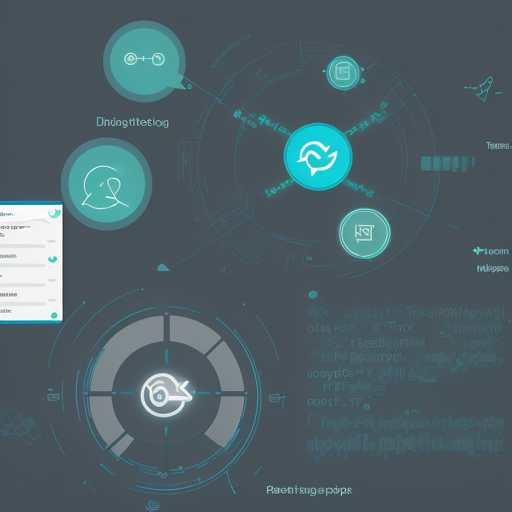Welcome to an exciting journey where we’ll learn how to train a DialoGPT model using WhatsApp chats. This advanced conversational model, inspired by Microsoft’s DialoGPT-medium, has the potential to emulate human-like conversations. Let’s dive into the details!
Step 1: Environment Setup
To get started, make sure you have Python installed on your machine along with the required libraries. You can install the necessary transformers with the following command:
pip install transformersStep 2: Load the Model
In this step, we’ll load the AutoTokenizer and AutoModel. Think of the tokenizer as a translator; it converts your text input into a language the model understands.
from transformers import AutoTokenizer, AutoModelWithLMHead
tokenizer = AutoTokenizer.from_pretrained("harrydonni/DialoGPT-small-Michael-Scott")
model = AutoModelWithLMHead.from_pretrained("harrydonni/DialoGPT-small-Michael-Scott")Step 3: Initiate a Chat
Now it’s time to put the chatbot to work! Here’s how the conversation will flow:
- The user inputs a message.
- The model processes the input and generates a response.
- This back-and-forth continues for a defined number of exchanges.
Code Explanation
Now let’s break down the logic of our interaction with the chatbot using a fun analogy:
Imagine you’re at a party playing a game of “telephone.” You whisper something to your friend, who then distills and enhances that message before passing it to the next person in line. Each player represents a “step” in our code.
for step in range(4):
new_user_input_ids = tokenizer.encode(input("User: ") + tokenizer.eos_token, return_tensors='pt')
bot_input_ids = torch.cat([chat_history_ids, new_user_input_ids], dim=-1) if step > 0 else new_user_input_ids
chat_history_ids = model.generate(
bot_input_ids, max_length=200,
pad_token_id=tokenizer.eos_token_id,
no_repeat_ngram_size=3,
do_sample=True,
top_k=100,
top_p=0.7,
temperature=0.8
)
print("Michael: {}".format(tokenizer.decode(chat_history_ids[:, bot_input_ids.shape[-1]:][0], skip_special_tokens=True)))In this code, we are performing the following key actions:
- Using a loop to control the number of exchanges (4 in this case).
- Encoding user input and appending it to a history of conversations.
- Generating a response from the chatbot with certain restrictions to ensure variety and relevance in replies.
Troubleshooting Tips
If you encounter issues while implementing this code, consider the following remedies:
- Ensure all libraries are installed correctly and are up-to-date.
- Check for typos in your code, especially in function names and paths.
- Review the input format; the model expects specific types of input.
- For any persistent issues, feel free to reach out through our Discord server.
For more insights, updates, or to collaborate on AI development projects, stay connected with fxis.ai.
A Glimpse into Future Advancements
At fxis.ai, we believe that such advancements are crucial for the future of AI, as they enable more comprehensive and effective solutions. Our team is continually exploring new methodologies to push the envelope in artificial intelligence, ensuring that our clients benefit from the latest technological innovations.
Wrap Up
Now you are equipped to train and interact with a DialoGPT model using WhatsApp chats! Unleash your creativity and experiment with various dialogue formats to see how well your model can converse. Happy coding!

